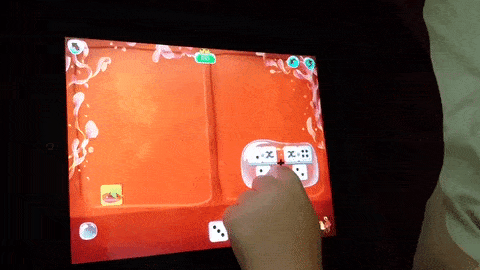- Pragmatic Parenting
- Posts
- Mindful Math: Cultivating Patience and Persistence in Problem Solving
Mindful Math: Cultivating Patience and Persistence in Problem Solving
Discover how mindfulness techniques can help kids approach math with patience, confidence, and a positive mindset.
Dear Fellow Parents,
Have you ever watched your child struggle with a math problem, frustration building with each failed attempt? As parents, we’ve all been there—seeing our kids battle through homework, their confidence shaken by numbers that don’t add up. But what if we could change the narrative? What if math became less about immediate right answers and more about the process of thinking, learning, and growing? That’s where mindfulness comes in.
By integrating mindfulness techniques with math problem-solving, we can help our children cultivate patience and persistence—essential life skills beyond numbers and equations. Let’s explore how we can make math a more mindful and rewarding experience for our kids. Maybe next academic year, they’ll start loving Math more!

The Link Between Mindfulness and Math
Math is often viewed as rigid—right or wrong, black or white. But in reality, problem-solving is a journey. Mindfulness encourages children to stay present, approach challenges with curiosity, and build resilience when things don’t go as planned.
When kids engage in mindful math practices, they:
Reduce anxiety associated with making mistakes.
Develop a growth mindset, seeing mistakes as learning opportunities.
Strengthen focus and concentration, making problem-solving more effective.
By shifting our approach, we empower our children to embrace the challenge rather than fear it.
Techniques to Foster Mindfulness in Math
1. Start with a Deep Breath
Before tackling a tricky problem, encourage your child to take a deep breath. Inhale for four seconds, hold for four, and exhale for four. This simple practice calms the nervous system, allowing the brain to focus with clarity.
2. Use Positive Self-Talk
Children often tell themselves, “I can’t do this” or “I’m just bad at math.” Help them reframe these thoughts by saying:
“I haven’t figured it out yet, but I will.”
“I am learning, and mistakes help me grow.”
“Every problem is a puzzle, and I love solving puzzles!”
By practicing self-kindness, children can approach problems with confidence rather than fear.
3. Break Problems into Smaller Steps
Overwhelm can lead to frustration, but breaking a problem into smaller, manageable steps makes it feel achievable. Encourage your child to:
Read the problem slowly.
Identify what they know and what they need to find out.
Solve one step at a time instead of rushing to the final answer.
4. Encourage a Growth Mindset with “Yet”
When kids struggle, remind them of the power of yet. Instead of “I don’t understand fractions,” encourage them to say, “I don’t understand fractions yet.” This tiny shift fosters resilience and persistence.
5. Take Mindful Breaks
If frustration builds, stepping away for a short break can work wonders. A quick stretch, a few jumping jacks, or even a walk around the room can reset the brain and provide a fresh perspective.

6. Practice Number Visualization
Mindfulness involves engaging the senses, and math can benefit from the same approach. Encourage kids to visualize numbers, draw diagrams, or use real-life objects to understand abstract concepts. When math feels tangible, it becomes more intuitive.
7. Celebrate the Process, Not Just the Answer
Instead of focusing solely on getting the correct answer, praise your child’s effort and strategy. Say things like:
“I love how you didn’t give up!”
“You tried different ways to solve this—that’s great thinking.”
“Your patience really paid off!”
This reinforces persistence and shifts the focus from perfection to progress.
Bringing Mindful Math into Daily Life
Mindfulness doesn’t have to be reserved for homework time. Here are some ways to make mindful math a natural part of your child’s day:
Cooking Together: Measuring ingredients introduces fractions in a hands-on way.
Nature Walks: Count patterns in flowers, leaves, or tree branches.
Grocery Shopping: Let kids estimate total costs or compare prices to strengthen mental math skills.
Board Games & Puzzles: Playing games like Sudoku, chess, or tangrams fosters problem-solving patience.
The more we integrate math into everyday life, the less intimidating it feels.
Shifting from “I Can’t” to “I Can”
Math struggles don’t have to be a battle. By incorporating mindfulness, we can help our children navigate challenges with patience, confidence, and curiosity. With each deep breath, positive affirmation, and mindful pause, they develop skills that will serve them far beyond the classroom.
Let’s raise problem-solvers who see challenges as opportunities and numbers as something to embrace rather than fear.
Learn AI in 5 minutes a day
What’s the secret to staying ahead of the curve in the world of AI? Information. Luckily, you can join 1,000,000+ early adopters reading The Rundown AI — the free newsletter that makes you smarter on AI with just a 5-minute read per day.
Warmly,
— Team Pragmatic Parenting
